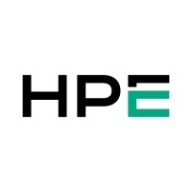
![Quest Rapid Recovery [EOL] Logo](https://images.peerspot.com/image/upload/c_scale,dpr_3.0,f_auto,q_100,w_64/gx7fdc2s39xboxn6pa3oukdu9s75.png?_a=BACAGSDL)
Quest Rapid Recovery and HPE Zerto Software compete in the data recovery and protection category. HPE Zerto Software appears to have an advantage due to its continuous data protection and real-time replication, which are crucial for maintaining uptime and providing superior recovery efficiency.
Features: Quest Rapid Recovery includes granular recovery points, agentless VM backups, and efficient compression and deduplication, which reduce storage costs and improve recovery speed. Its user-friendly backup scheduling interface enhances usability. HPE Zerto Software offers continuous data protection, real-time replication, and cloud integration flexibility, enabling seamless disaster recovery and scalability across diverse environments.
Room for Improvement: Quest Rapid Recovery faces slow GUI response times, limited platform support, and lacks advanced database backup features. Users desire better technical support and reporting functionalities. HPE Zerto Software requires enhanced cloud integration, pricing flexibility, and improved reporting and alert systems. Licensing transparency and automation are also needed for smoother cloud interactions.
Ease of Deployment and Customer Service: Quest Rapid Recovery is praised for its straightforward on-premises deployment and reliable technical support despite varying response times. HPE Zerto Software provides flexible deployment options in hybrid and cloud environments and is commended for professional support and responsiveness, although complexity in the initial setup and improved documentation is suggested.
Pricing and ROI: Quest Rapid Recovery is considered expensive, with pricing linked to storage needs, but it offers significant ROI akin to an insurance policy against data loss through its comprehensive feature set. HPE Zerto Software, also costly, features VM-based licensing ideal for large environments, delivering strong ROI by minimizing downtime and enhancing recovery efficiency. Both solutions are regarded as valuable investments in their respective areas.


| Company Size | Count |
|---|---|
| Small Business | 92 |
| Midsize Enterprise | 86 |
| Large Enterprise | 193 |
| Company Size | Count |
|---|---|
| Small Business | 16 |
| Midsize Enterprise | 5 |
| Large Enterprise | 2 |
Zerto is used for disaster recovery, business continuity, data migration, and ransomware recovery, providing continuous data protection and near real-time replication. Valued for ease of use, efficient failover processes, and versatile integration, it enhances organizational efficiency, reduces errors, and boosts productivity.
Quest Rapid Recovery [EOL] provides easy-to-use backup and recovery capabilities, emphasizing granular recovery and point-in-time restoration with simple installation, data replication, and user-friendly navigation.
Quest Rapid Recovery [EOL] helps manage infrastructure environments with features supporting disk backup, archiving, VM standby, and replication. Despite limitations like sluggish GUI, lack of support for tape and Mac, and high memory use, users appreciate its real-time data replication and strong reliability. The tool is employed in on-prem deployments and aids in disaster recovery, protecting data across cloud and on-premise servers, securing databases, and facilitating quick recovery during failures.
What are Quest Rapid Recovery [EOL]'s key features?Quest Rapid Recovery [EOL] is integral for industries requiring robust data protection, encompassing crucial server and database backups in compliance-focused environments with SQL databases and Hyper-V hosts, ensuring swift and dependable recovery solutions.
We monitor all Backup and Recovery reviews to prevent fraudulent reviews and keep review quality high. We do not post reviews by company employees or direct competitors. We validate each review for authenticity via cross-reference with LinkedIn, and personal follow-up with the reviewer when necessary.